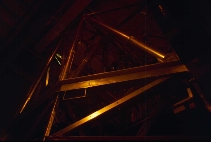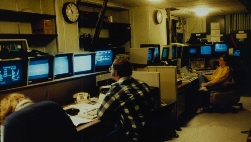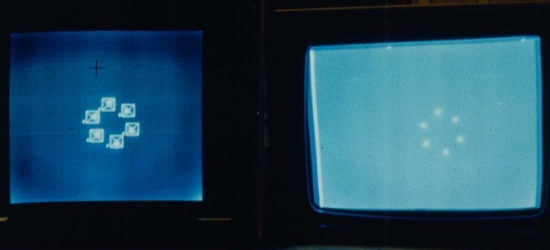

MMT originally stood for Multiple-Mirror Telescope, made from what amounted to 6 independent 1.8-m telescopes on a single mount bringing light to a common (very small, because of differently tilted light paths) focal plane. I went along for an observing run on a project with Rogier Windhorst while the telescope was still in its original multiple-mirror configuration. It was hard to get a good view of the old MMT because the enclosure hugged the telescope so closely. We used the MMT spectrograph to measure optical spectra of radio galaxies, selecting the most promising targets for further UV observations using IUE. Now that the MMT (with the same acronym but different words, now it's Magnum Mirror so they wouldn't need new stationery) is going into service as a 6.5m single-mirror instrument, we are starting a multiband imaging project to search for high-redshift galaxies and particularly survey clustering in the early Universe.

|

|
The MMT was first touted as a path to new telescope technology, using laser metrology to constantly align the individual mirrors and give the equivalent light grasp of a 4.5m telescope at a fraction of the cost of traditional designs. What the MMT really taught us, though, was from its minimalist enclosure - that astronomers had been causing much of the atmospheric image degradation that vexed them, through domes so large and massive that they caused serious thermal effects. The laser alignment system had problems with the insect population on Mt. Hopkins, showing a tendency to run away from proper position when moths flew through the beams. Real stars were more useful for aligning the optics, which needed to be done every half-hour or more. The bottom image shows the displays as such an alignment was in progress.

The MMT appears in this Google Maps satellite image Still to come: radio-galaxy spectra.
Last changes: 2/2007 © 2000-2007